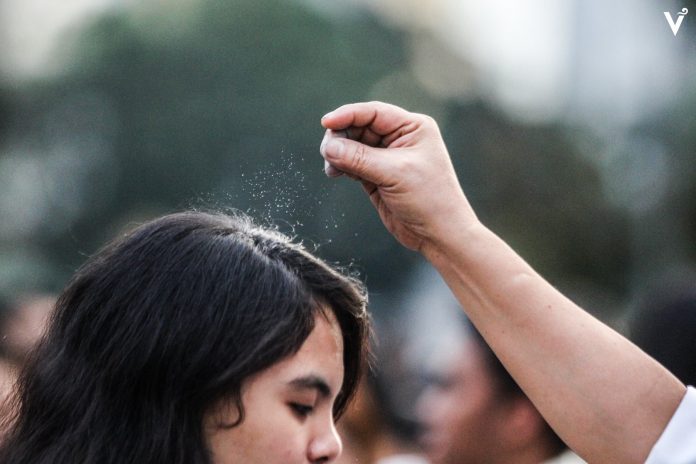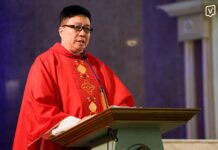
“Nothing has changed and nothing will change.”
Sacred Theology Dean Fr. Rodel Aligan, O.P. said this in his homily during the Ash Wednesday Mass at Santisimo Rosario Parish Church on Feb. 17, explaining the change in the practice of placing ash on people’s foreheads as a precautionary measure against Covid-19.
In January, the Vatican’s Congregation for Divine Worship and the Discipline of Sacraments recommended that priests instead sprinkle the ashes on top of a person’s head.
Aligan said the tweaked Ash Wednesday tradition should not “affect our internal intention to repent and start over again.”
“Nothing has changed and nothing will change [b]ecause the call is metanoia or a change of heart—pandemic or not. The ashes are an external sign of that internal reality. Let not the ashes be our problem,” he said.
Aligan said ash-sprinkling has symbolic roots from the Old Testament, wherein a repentant wore coarse sackcloth and sprinkled ashes on top of his head as a sign of penance.
Catholics were also reminded to engage in service and penitential acts apart from fasting and abstinence.
“As we do our act of penances during this Lenten season, let us remember the communal side of it … ‘Yung mga pagkain na di natin kinakain ay maari natin ipamahagi sa iba lalo na sa mga taong walang makain,” UST Parish Priest Fr. Paul Talavera, O.P. said during his homily in another Ash Wednesday Mass.
(As we do our acts of penance during this Lenten season, let us remember the communal side of it. We can share the food we would not eat with those who have nothing to eat.)
“Kapag tayo ay gumawa ng kabutihan, nagaayuno at nagdadasal ay ‘wag natin ipagmayabang. You should not be doing it for a reward. It is between you and God,” Talavera added.
(We should not boast when we carry out good deeds, fast and pray. You should not be doing it for a reward. It is between you and God.)
On Feb. 9, the Archdiocese of Manila released liturgical guidelines for Eucharistic celebrations on Ash Wednesday.
In instructions on how the faithful would receive the ashes, it said: “The priest then cleanses his hands, puts on a face mask, and distributes the ashes to those who come to him or, if appropriate, he goes to those who are standing in their places. The priest takes the ashes and sprinkles them on the head of each one without saying anything.”
Ash Wednesday marks the beginning of Lent for Roman Catholics and Christians around the world.
It comes from the ancient Jewish tradition of penance and fasting, and the ashes symbolize the dust from which humans were made by God.
During Lent, the faithful are expected to pray, fast and give alms for 40 days, leading to the celebration of the passion, death, and resurrection of Christ during Holy Week and Easter. Ma. Alena O. Castillo and Sophia T. Sadang













